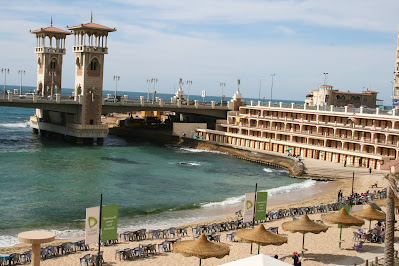Coptic Cairo Tour
After the decline of the ancient pharaonic cult and before the introduction of the Muslim religion, Egypt was a predominantly Christian country. The capital in this period was Alexandria, Cairo had yet to be born.
In the area of present-day Cairo, in the 6th century AD the urban settlement consisted only of a Roman fortress located on the Nile, guarding a crossroads along the road between the ancient Egyptian cities of Heliopolis and Memphis.
Coptic Cairo Tour
When the Arab general Amr Ibn al-Aas encamped near the fortress, the foundations were laid for the future foundation of Cairo. Known today as Ancient Cairo (Misr al-Qadima), this old area of the city holds a bulwark of Egyptian Christianity, namely Coptic Cairo, with its historic churches.
The area of ancient Cairo also includes the southern end of the island of Roda, where the Nilometer is located, used since the time of the pharaohs to measure the level of the river and predict the flooding of its banks.
To visit ancient Cairo it is convenient to take the subway; Mar Girgis station is located four stops south of Midan Tahrir, the central square (Sadat Metro station). If you want to make a less monotonous journey, you can also opt for the Metro, which for this area depart from under the Comiche, in front of the Arab TV building. After a few minutes walk from the pier you will arrive in Coptic Cairo, the oldest part of present-day Cairo.
The term "Coptic" is the modern name used to indicate the oldest part of the city. The area of this area is enclosed within the walls of the Roman fortress of Babylon, from the third century AD, and is an area of quiet alleys and ancient sacred sites.
Among the most interesting buildings in this area are the Greek Orthodox Church of San George, with a circular plan. In Cairo, devotion to the saint is much older and a church was consecrated to him in the 10th century in the Coptic quarter; the current circular basilica dates back to the beginning of the 20th century.
Crossing a garden shaded by kiosks you enter the Coptic Museum, Founded in 1908, the Museum houses an important collection of finds that illustrate a period of great change in world cultural history, when in the entire Mediterranean basin the ancient pagan - Greek deities, Roman and Egyptian were supplanted by the creed and sacred images of Christianity. The old wing of the museum was damaged in the 1992 earthquake and has been closed for over a decade for restoration. Given its recent accessibility, take the opportunity to visit the area below closed by the Porta sull'Acqua, another portal with two towers of the Roman fortress, which is accessed by the staircase located on the southern side of the garden.
Built right across the Porta sull'Acqua, the wonderful Church of the Virgin Mary, commonly called "La Sospesa" church (EI-Moallaqa, in Arabic) as it literally seems to rest on the two Roman towers.
It was probably erected in the 9th century, so it is not the oldest of the group of churches that welcomes Coptic Cairo, but it is undoubtedly the most beautiful.
Leaving the church, taking the main street towards the north, along the subway line, up to a staircase that allows you to go down, through a short tunnel, and return to the Coptic quarter. Beyond the portal, on the left, there is an alley between high walls that leads to the Convent of San Giorgio, closed to the public except for the main hall and the chapel. Going down over several large stores of "ancient objects": on the corner stands the Church of San Sergio, in Arabic Abu Serga. You have to go down another staircase, which indicates the age of the surrounding buildings: the lower the level, the older are the monuments Historians debate about the foundation of this church, but in general consensus, it dates back to the 5th century.
At the end of the same alley, you will find on the left the Church of Santa Barbara from the 11th century and on the right, after a small gate, the Synagogue of Ben Ezra. Revered as the oldest synagogue in Cairo, it is traditionally associated with the prophet Jeremiah, whose temple is believed to have stood on the area.
Not far north of the walls of the Coptic quarter is the Amr Mosque, which takes its name from its builder, the Arab general Amr ibn el-As who conquered Cairo in 640 and spread Islam in Egypt. Although its present appearance is the result of many modifications and restorations, the mosque still occupies a prominent place in the history of Cairo as the first place of the teaching of Islam in the country. From the Coptic quarter, a very short walk will take you to the Nilometer: cross the underground line thanks to the footbridge and reach the river, where a small bridge will lead you to the island of Er-Roda.
For more information about Egypt tours contact us at +201001501509





Comments
Post a Comment